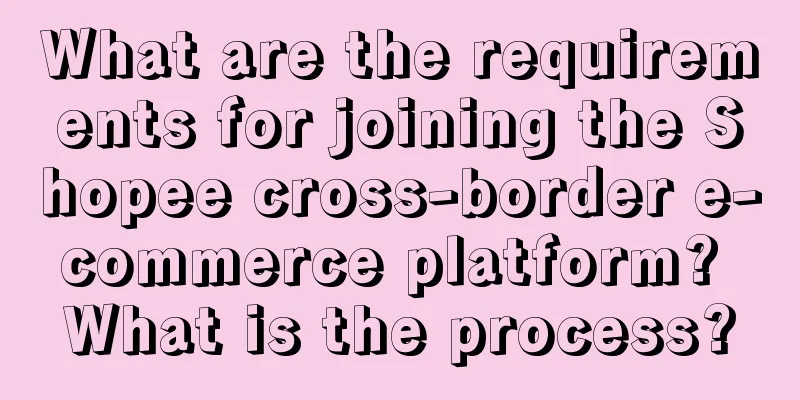“Why do people buy?”——Understanding the truth of purchases will provide a basis for brand marketing

There is a product in Yunnan called Flower Cake, which should have been bought by all those who have traveled to Yunnan. The slogan of Jiahua, a famous brand of flower cake, is "Three Roses and One Cake". I personally think this is a very good copywriting, with detailed and vivid selling points and precise and specific numbers. But the question is, after reading this appeal, would you consider ordering flower cakes? Or does this sentence inspire you to want to eat flower cakes? I think most likely not. Because functional publicity can only strengthen people's decision-making mode, but cannot stimulate people's desire to consume . In other words, this selling point copy only works when you have decided to buy flower cakes. If you have no intention to buy, then it doesn't matter whether it promotes "whole rose petals as filling, real ingredients, freshly baked" or "selected ingredients with double organic certification". This is the limitation of functional promotion. However, many professional marketers often fall into a misunderstanding in their work, thinking that they must extract a product selling point to inform consumers of the product's functions and qualities, and provide consumers with a reason to buy before they will choose to buy. I call this misunderstanding: cognitive education trap . If this misunderstanding develops one step further, it will fall into another misunderstanding: proprietary paranoia . When building a brand, you must find a unique selling point of your own and establish a differentiated advantage. If others also have my selling point and can use my slogan, then it will have no sales power. Adhering to this concept, many people build their brands by desperately looking for differentiation in functional selling points, and through a large amount of media publicity to educate consumers and convince them to pay. I call these two the two major misunderstandings in brand building: cognitive education trap and proprietary paranoia. First, this approach is very easy to differentiate for the sake of differentiation. Although differentiation is achieved, the difference is too niche and not the basis for consumers to buy, and therefore lacks motivation. Second, functional promotion is difficult to convince consumers to buy. It is very ineffective to forcibly instill product information into consumers when they are not interested and lack the desire to buy. Third, relying on strong promotion of product selling points to brainwash consumers is very expensive. In fact, when it comes to marketing and branding, we ultimately have to return to the fundamental question of "Why do people buy?" Only when we understand the truth behind purchases can brand marketing have a basis. 01 “Understanding the truth of purchases will provide a basis for brand marketing”The core of purchase depends on three factors: scene relevance, mental uniqueness, and social popularity. Scenario relevance means that the brand should be relevant to the consumer's life scenario. When the consumer is in this scenario, they can quickly think of your brand and understand the brand's value. In this way, the brand can be associated with the consumer's needs and stimulate the interest and desire to buy the brand. People's needs are always generated in scenes and determined by scenes. For example, the flower cake mentioned above, the reason why its function promotion is ineffective is that it does not occupy a scene in consumers' lives. We usually buy flower cakes only in one occasion, that is, when we travel to Yunnan to bring souvenirs to relatives and friends. In the scene of daily snacks, consumers don’t even think of flower cakes. This brings us to the second factor: mental uniqueness. Mental uniqueness refers to the degree to which consumers remember the brand and their recall of the brand when making purchasing decisions. When consumers want to shop, can they think of you first and foremost? If he can't remember after a long time, or thinks of several other brands before thinking of you, then the possibility of him buying from you is very small. Simply put, this is called " remembering and recalling ", which is the basic indicator of brand building. The third factor is social popularity. It refers to whether the brand is popular and topical in social groups. People's purchasing behavior is often not based entirely on personal needs, but is influenced by others and social trends. People will want to buy what others have and what is popular in society. Social popularity can determine purchases . For example, the "Art of War" in February this year was sold out due to the hit TV series "Kuang Biao"; Wumeizi sauce became popular because of Li Ronghao's song of the same name; During Messi's China tour in June, the little fan who rushed into the stadium was wearing a pair of Yonex badminton shoes. The live video was watched by hundreds of millions of people, and the shoes also made it to Tmall's 618 hot-selling list. There is a social phenomenon called "interpersonal phenomenon", which is the phenomenon that people are influenced by others. This phenomenon is simply called following the trend, and a more professional term is called imitation and keeping in line with the group. 02 “The ultimate essence of brand communication – triggering imitation behavior”Tarde, one of the founders of French sociology in the 19th century, once said, " Imitation is communication ." I think this sentence explains how advertising and brand communication work on consumers and how they drive sales. The ultimate meaning of brand communication is to trigger consumers to imitate. In marketing, we often talk about a word called FOMO (Fear of Missing Out) . We are afraid of missing out on the latest news and trends. We are afraid of not knowing the gossip and hot spots that others already know. We are afraid of not having what others have, because this means falling behind and being out of touch with the masses. Therefore, when a product has social popularity and becomes a hot topic in society, it can maximize people's enthusiasm for buying. For example, in the past few years, consumers lined up for a cup of Heytea, and recently there were long queues in front of Huawei stores to buy Mate60 pro, as well as the hot sales of Maotai coffee. This is the value of socialization. Socialization not only affects consumers’ purchasing behavior, but also affects their perception of the brand. There is also a phenomenon in psychology called the retinal effect. It refers to a random factor that becomes a common phenomenon due to our excessive attention. The commercial value of this phenomenon is that if a brand has social popularity, then the brand's advertisements and various marketing actions will be noticed more. For example, Hua Xizi has been very popular recently, so every marketing move of Hua Xizi, from apology letters to "crazy" public relations and inviting sports veteran Chusovitina to shoot oriental makeup advertisements, has triggered heated discussions in society and has been put under the microscope by the public. If a brand lacks social attention and only conducts pure hard advertising and precision marketing, and only reaches its target consumers, then the effect will be very poor. Only when a brand is wrapped in a social and cultural atmosphere can it truly break through the platform barriers and the fog of information explosion. Brands must be committed to socialization and create topics, hot spots, and heated discussions at the social level. Socialization can amplify the effect of advertising, feed back traffic, and feed back sales. In fact, the biggest problem for most brands in marketing is not that the product is bad, nor that consumers don’t know how good your product is, but that they don’t realize they can buy you. It’s not that consumers don’t have demand, but that they don’t have demand for you. Therefore, the indicator of brand awareness should be composed of the brand's own prominence and the brand's popularity at the social level . Social popularity can make more consumers aware of the brand's existence and successfully stimulate demand. Another example is brand reputation. In the past, we looked at consumers’ perceptions, associations, and attitudes toward brands from an individual perspective. However, individual preferences are easily influenced by public opinion. A successful topic or event can greatly enhance a brand’s reputation, but a crisis can also bring the brand image to the bottom. For example, last month, Jie Rou entered the wrong product price in the live broadcast room. If the company shipped the product at that price, it would lose tens of millions. A customer took the initiative to cancel the order of the "10 yuan for 6 boxes" product. For this, Jie Rou wrote a special letter to thank the customer and presented a big gift package containing many benefits and rights. Afterwards, the topic #Jie Rou writes a letter to thank the customer who canceled the 10 yuan order for 6 boxes# began to ferment on Weibo and became a hot topic. It helped Jie Rou gain a lot of goodwill, and the effect of promoting the brand was comparable to running image advertising for a whole year, which was enough to make up for the losses caused by entering the wrong product price. Today, the times are developing rapidly, consumption concepts are constantly changing, new generations of consumers are rising in waves, and various subcultures are emerging. Many classic brands that were well-known and sold well for many years are experiencing aging problems, and rejuvenation has become a difficult problem facing many companies. However, if we examine this topic carefully, you will find that the reason why many brands age is not because their products and technologies are outdated, but because the brands are not socialized enough. People no longer pay attention to and talk about them, and the brands disappear from social trends. As a result, they become outdated and outdated in people’s minds, and are out of touch with the contemporary world, and are subsequently abandoned by consumers. In early January this year, Tianfu Cola, a well-known domestic brand, became a hot topic because of a bankruptcy rumor. At that time, its chairman clarified the bankruptcy rumors in the live broadcast room and personally promoted the products, attracting millions of netizens to watch and support. On the same day, Taobao sales increased 30 times. From the perspective of sales, the reason why consumers buy is mainly driven by hot searches on Weibo and the popular atmosphere created by heated discussions in society. From the perspective of brand building, the reason why consumers did not buy the product in the past had nothing to do with the product strength, but because Tianfu Cola had long lost its mental significance and social popularity and disappeared from consumers' memory . The brand thus became outdated and even its brand awareness, recognition, and reputation were all gone. The purpose of brand building is not just to influence target consumers, but to create popularity and public influence at the social level. You know, brands are not on the shelves, nor are they only in the minds of consumers, but also exist in social culture. Brand building must be committed to breaking through social culture. Humans are social animals, and a person's cognition, demand generation and purchasing behavior always occur in a social environment. Without the social and cultural atmosphere and the promotion of hot events, it is difficult for a brand to trigger group purchases and establish a good brand image and brand awareness by simply promoting product functions and educating consumers. 03 “The goal of socialization is to establish brand discourse power”Socialization is an important dimension of brand building. Although the concept of social marketing has a long history, brand socialization is not just about opening an official Weibo or official public account and publishing some content; it is about helping brands build a good public context and ensuring that the brand is positively and actively followed and discussed by people in the social public environment. In short, the goal of socialization is to establish brand "voice". Peter Drucker, the "father of modern management", emphasized that " customer perception of value determines everything ". The survival and development of an enterprise depends on how consumers perceive it. Because of this, brand building should take the establishment of discourse power as its goal, and coordinate its product development, technological innovation, competitive strategy formulation, brand building, marketing promotion, event public relations, media placement, etc. The essence of all corporate competition, in the final analysis, is the struggle for discourse power. Let’s look at an industry case, new energy vehicles. As we all know, for electric vehicles, their product value and user awareness are built on two core technologies: intelligent driving and batteries . When it comes to electric cars, among the two most famous and influential brands, Tesla occupies the smart driving market, which makes consumers recognize the brand as technological and innovative, while BYD occupies the battery market, which makes consumers recognize the brand as safe and reliable. Tesla's entire marketing strategy, for example, if we look at its product line, Tesla first built an electric supercar Roadster, and then used the large screen and technology of the luxury car Model S to subvert the perception of traditional luxury cars. This is completely different from the past new energy vehicle companies that started with economic models. Musk's goal at the time was to break people's stereotype that electric cars are destined to be golf carts. Another example is Tesla’s brand story “Silicon Valley vs. Detroit”, Tesla’s angel group “Silicon Valley Elite”, Elon Musk’s personal image and experience, SpaceX’s entrepreneurial story, and the epic performance of sending Tesla into space. All of this is to build Tesla’s influence and voice in the fields of smart driving and technological innovation, and to draw a clear line between itself and traditional car companies. BYD launched its battery technology brand "Blade Battery" in March 2020 and promoted it on a large scale. Many consumers are still impressed by BYD's needle puncture test, which established BYD's voice in the field of electric vehicle batteries and established BYD's position in the electric vehicle industry. In January 2023, BYD launched a four-wheel independent motor technology called "Yisifang"; in April 2023, it released a new technology brand, the intelligent body control system "Yunnian". As we all know, the three major components of electric vehicles are batteries, motors, and electronic controls. BYD has created a technology brand in each of these three areas in order to establish its voice in the electric field. Tesla and BYD have completely different ways of constructing various brand discourse rights. Even when we look at the negative news about these two car companies, such as the types of accidents, there is a clear distinction because these two brands have established different cognitive frameworks in our minds. Today, consumers have greater consumption power and discourse influence. "Everyone is a self-media" and every consumer has unprecedented power in this era. This is the most fundamental spirit of the Internet, " empowering people ". This is an era that belongs to everyone, and this is an era that is out of control. In this consumer-dominated era, companies are more likely to "lose control". Some time ago, a restaurant in Shenzhen, Guangdong, did not allow deliverymen to wait for their meals in the store and told them to get out. After this incident was exposed on the Internet, netizens flocked to the store's online platform to write negative reviews, reaching more than 9,000 in half a day, and finally the store's delivery platform was forced to be removed. We can safely say that today's consumers have mastered the dominant power, right of choice, and even ownership of consumption. How consumers talk about brands in the public network context has a huge impact on the brand building and product sales of enterprises. Enterprises must pay more attention to the construction of brand discourse power, strengthen risk awareness and dynamic monitoring, and handle various risk events in a timely and prudent manner. And you should find that in recent years, brands are more and more prone to public opinion crises, which is a concrete manifestation of consumers leading public opinion. In particular, the emergence of various new media platforms has accelerated the speed of information dissemination, and everyone can speak out, which makes it easier for brands to be ignited by a spark and detonate the entire social network. In February this year, a netizen complained that his cancellation of a hotel in Kangding was refused and he was insulted by the hotel after giving a bad review. This incident attracted the collective attention of netizens on the Internet. Afterwards, the director of the local cultural and tourism bureau promptly responded to the handling results on Weibo, apologized publicly, and took this opportunity to warn all businesses in Ganzi Prefecture to operate with integrity and purify the market, otherwise "whoever ruins Ganzi tourism will be ruined by me." Afterwards, #Whoever destroys Ganzi tourism will destroy his job# became a hot topic on Weibo. The emergence of this topic not only reversed the negative impact, but also successfully won the public's favor. In addition, many KOLs and blue V media participated in forwarding and commenting on this matter, helping Ganzi create more hot searches, such as #Netizens praise the execution of Ganzi Culture and Tourism Bureau#, #Why Ganzi received rave reviews despite negative news#, #Ganzi Culture and Tourism Bureau Director responds to blogger being scolded for canceling hotel reservation#, #How will the cultural and tourism industry develop after the Culture and Tourism Bureau Director becomes famous#, etc. As an authoritative endorsement, Blue V Media has enhanced the local tourism brand image and credibility of Ganzi, while bloggers from different fields have expanded Ganzi's influence in many sub-circles such as finance, tourism, technology, and animation, further promoting the impact of the event. This positive and negative combination plays a significant role in the construction of Ganzi's tourism brand. To create a good discourse ecology, from the perspective of the company, the most fundamental thing is to continuously improve product strength and brand strength, strengthen user management, and actively export brand culture and values. This is the most important in the long run and is the fundamental guarantee for the brand. In the medium term, companies should also strengthen internal management, especially the management of front-line employees, and establish a complete after-sales service and customer complaint response mechanism. In addition, they should strengthen marketing knowledge training for employees. In the short term, companies should strengthen their diagnosis of the online discourse ecology, make plans and response procedures in normal times, make judgments in emergencies, and make reasonable use of various platform tools such as micro rumor complaint labels, corporate statement labels, topic party modules, content annotations, etc. In addition, I particularly think that companies must understand the Advertising Law to avoid marketing failures, and also learn more about various laws and regulations to safeguard their legitimate rights and interests. On the other hand, from the perspective of outside the company, building brand voice is not something that the company can do by shouting loudly on its own, but rather it requires speaking together with platforms, media, KOLs, opinion leaders, consumers, relevant stakeholders, and the public to create resonance at the social level. McLuhan said " the medium is the message ". This means that compared to the message itself, the media that carries the message is also transmitting the message, and sometimes the media form is even more important than the message itself. For example, the same thing, explained through an article and interpreted through a short video, the effect is different; the same thing, an ordinary netizen speaking out and an authoritative media reporting, the effect is also different. 04 “Three Steps to Building Brand Discourse Power”Brand discourse power needs to be jointly built, which should include three parts:
To achieve this effect, companies must manage major social platforms well, open their own media accounts, publish brand content, and then use various tools, such as Weibo's brand accounts, product specials, and searches, to build a positive content ecosystem. At the same time, we must rely on media endorsements and KOLs to interpret product strength and enhance the company's authority and credibility in the industry; when necessary, they can also help the company make neutral interpretations, clarify false rumors, and restore objective facts. Secondly, companies should strengthen their operations with consumers, spend more time with consumers, create good user reputation, and help brands continue to build positive discourse assets. At critical moments, these loyal users and fans can help brands speak out, and the brand's past positive reputation can also become a powerful tool for brands to deal with risks. We have many social platforms today, and the attributes and fields of different platforms are different. According to my understanding—— Weibo is a " public opinion field " where all kinds of social hot spots, topics and major events are followed, discussed and hotly debated on Weibo. WeChat is a " private domain ". Official accounts, video accounts, WeChat groups, mini-programs, enterprise WeChat, and personal WeChat can help companies conduct private domain operations and accumulate fans. Tik Tok is an “ entertainment venue ” and a big stage for national entertainment. Kuaishou is a " life scene " that presents and displays more real life scenes compared to Douyin. Bilibili is a " field of interest " where the new generation of consumers are scattered in different circles. Xiaohongshu is an " aesthetic field " and it also displays life scenes, but with the addition of filters, it shows the more refined and moving side of life. Zhihu is a " knowledge field " that presents more knowledge questions and answers and popular science content. So when it comes to the construction of social public discourse, companies should make better use of Weibo's products and resource tools to comprehensively monitor the discourse ecology and popularity data, including the popularity of event dissemination, forwarding nodes, key communicators, users' positive and negative hot opinions, etc. This can assist companies in making decisions at the first time, and companies can use this as a basis for determining whether to respond and how to respond. In terms of building discourse power, companies also need to pay more attention to and analyze social and cultural trends and gain insight into the mentality of social groups. Professor Dai Jinhua once said: "Since the 20th century, there have been three core issues in society: class, race, and gender." These three issues are global and highly concerned social issues in various countries and regions. Of course, in China, the focus of their expression is different. In China, class is more manifested in workplace culture and social class differentiation. The popularity of hot words such as "working people", "social animals", "996", "involution" and "slacking off" in recent years are all related to this major issue. The popularity of "KFC Crazy Thursday" and the recent uproar over Li Jiaqi's remarks are also related to this. In China, race is more manifested as national sentiment and national trend. Today, many companies are taking advantage of this issue to reconstruct brand culture and create marketing actions, such as Li Ning, Guanxia, Pechoin, etc., including the recently popular Huaxizi and Fenghua, as well as the highly respected Huawei and BYD. On August 9 this year, BYD's 5 millionth new energy vehicle rolled off the production line, making it the first automaker in the world to achieve this result. That evening, BYD released a theme advertising film titled "Together, It's Chinese Cars", interpreting the development and achievements of Chinese cars from the perspective of the entire Chinese auto industry. This short video quickly became a hot topic on Weibo, not only flooding consumers' Moments, but also attracting many likes and reposts from friendly companies. Many people praised BYD for its "big picture", which is also related to current social issues and public psychology. As for gender, we can actually see that almost all domestic brands related to women, whether it is underwear, cosmetics, washing and care, household cleaning, clothing, etc., are building brands and implementing marketing promotions around women's values, and there are countless successful cases. Of course, many brand marketing failures and public opinion crises in recent years are also related to these issues. Therefore, companies must pay more attention to marketing behaviors related to these issues, which are an important part of the construction of corporate discourse ecology. In this social environment dominated by big data, social media, and public opinion, socialization is becoming increasingly important for corporate brand building, including the crises and risks that many brands encounter during their growth. In such an environment, companies must pay more attention to the construction of discourse power and complete brand socialization. Only brands with discourse power have strong risk resistance. |
<<: Haidilao enters campus: the winning strategy of "intercepting flow" thinking
Recommend
Are all the products sold on Amazon genuine? Are the products sold by Amazon itself authentic?
If we want to buy overseas products, we can buy th...
What are the conditions for joining the shein platform? What are the requirements?
Now many people will choose to do cross-border e-c...
Is Amazon Global Selling Reliable? What Are the Pros and Cons?
Whether you can make money by opening a store on A...
This is effective user segmentation, not just high, medium and low
This article will systematically explain how to co...
New "Spring Festival Gala Economics": No red envelopes, just want to sell goods?
As the year draws to a close, in addition to Sprin...
What happens if Amazon credit card charge fails? Where can I view the charge?
When shopping on Amazon, many people choose to use...
Oracle closes its advertising business unit: a cross-border journey of ambition and frustration
Why did Oracle close its advertising business unit...
Can Amazon sell virtual items? What products can it sell?
There are many modes and ways to operate online st...
What is the process of transferring an etsy store? Precautions
If you want to sell something on the Etsy platform...
Unveiling the secrets of leveraging marketing: value benefits, six common methods, and the "three degrees" that need to be paid attention to
In the brand communication strategy, leverage mark...
How to film a real "business war"
Creators of business war dramas and professional d...
E-commerce platforms are fighting hard for the New Year Shopping Festival
As the Spring Festival is approaching, e-commerce ...
New tea drinks are now being sold for breakfast. What are the chances of success?
Breakfast is a necessary meal every day, but many ...
How to register for Amazon Black Friday Cyber Monday 2023? What should I pay attention to?
Amazon Black Friday promotions usually start on th...
MINISO, walking between high-quality products and imitations
MINISO has achieved strong growth in performance t...









